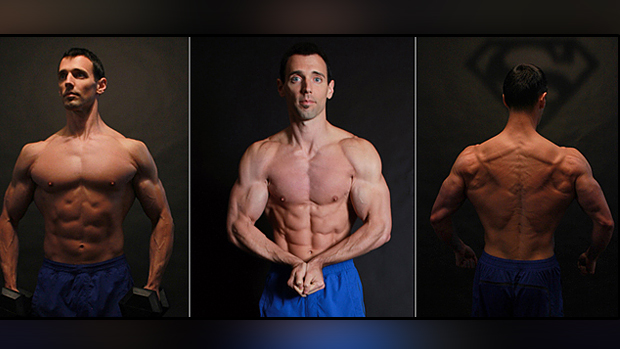Don't Forget a Maintenance Phase
Firstly, let's address the issue of training for maintenance. Why would you do that?
Hypertrophy training requires you to train hard, and with high volumes, while progressively overloading your body. More is better, but you can't indefinitely train harder and for longer. Eventually, the Law of Diminishing Returns will kick in: the more you do something the less you get from it in subsequent exposures. To overcome this, you need to periodize your training. You need to train with lower volumes.
For example, periods of time spent training for strength or at maintenance training should be included to allow for full recovery and to set the scene for the next block of hard muscle-building training. By reducing your training volume to maintenance levels for a month or so you can re-sensitize your body to volume again. Then ramp volume back up in your next mass gain phase.
These maintenance phases allow your body to settle, refuel, and prime yourself to continue your muscle-building journey. After a long mass gain phase, you accumulate a lot of fatigue, your body becomes less insulin sensitive, it adapts to the high volumes, and requires you to do even more to overload the system. This all sets you up for a higher chance of fat gain, overtraining, or injury.
Properly timed deloads can help mitigate these risks for a period but they can't compensate for months of hard training. A maintenance phase is just what the doctor ordered.
Another reason for maintenance phases is to help retain muscle built during a bulk. Give your body a chance to become adapted to its new, more muscular set-point.
Use the maintenance phase at the end of your mass phase when calories and training volume are at their peak. During this phase, you'll attempt to maintain your bodyweight. This enables the body to find its "new normal." As a result, it will hold onto the muscle you built during the mass phase.
Call It What You Want, Just Do It
I bet the whole "maintenance" thing is still bugging you, right? Who wants to train at maintenance? It's all about full beast mode, 24/7/36, bro!
That's why I like to call maintenance phases "primer phases." This phase is literally priming you for future gains. Or think of it as a "transition" phase between bulking and cutting, or a "strength" phase.
While this is all semantics, the vocabulary used makes a big psychological difference and improves adherence. So, pick whichever language suits you and then get your head down and do what's required: low-volume strength training while eating at maintenance.
Maintenance Phase Training and Nutrition
Train for strength – lower frequency, lower volume, lower reps, but heavier weights than what you used in your mass or cutting phase. For example, 3 sets of 5 reps (3x5). This works because it's much easier to maintain muscle than it is to build it, so the stimulus from training can be much lower.
As for nutrition, an isocaloric diet is best – maintain your bodyweight and eat at maintenance.
While eating at maintenance and training heavy there's little risk of muscle loss. Protein can stay the same as during your mass phase. Carbs can be reduced as training volume is lower. Fats can be increased somewhat to offset the reduction in carbs and ensure hormone levels are maintained.
This phase allows you to recover some insulin sensitivity after your high-carb mass phase. It also allows psychological relief. After following a high carb, relatively low-fat mass gaining phase you'll likely be sick of foods like rice, oats, and potatoes paired with lean proteins. As a result, the opportunity to have some fatty foods with some carbs during maintenance helps to wash away any fatigue and set you up for the next phase of dieting.
Maintenance Phase Nutritional Guidelines
- Protein: 0.9g/lb. (2g/kg)
- Carbs: 2.5 to 3g/kg, about half that of peak mass phase
- Fat: The rest (around 1.25 to 1.5g/kg)
- Note: 1kg = 2.2 pounds
How to Track Progress During a Maintenance Phase
Just maintain weight! If weight fluctuates by more than plus or minus a pound (0.45kg), adjust calories up or down by 250 to 500 per day (lower end of range for smaller individuals and higher range for bigger guys).





